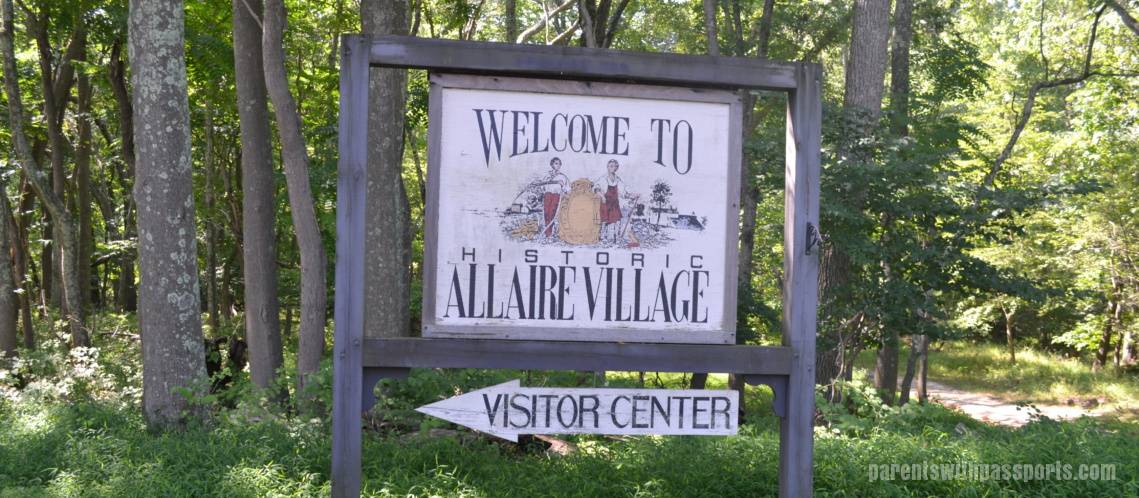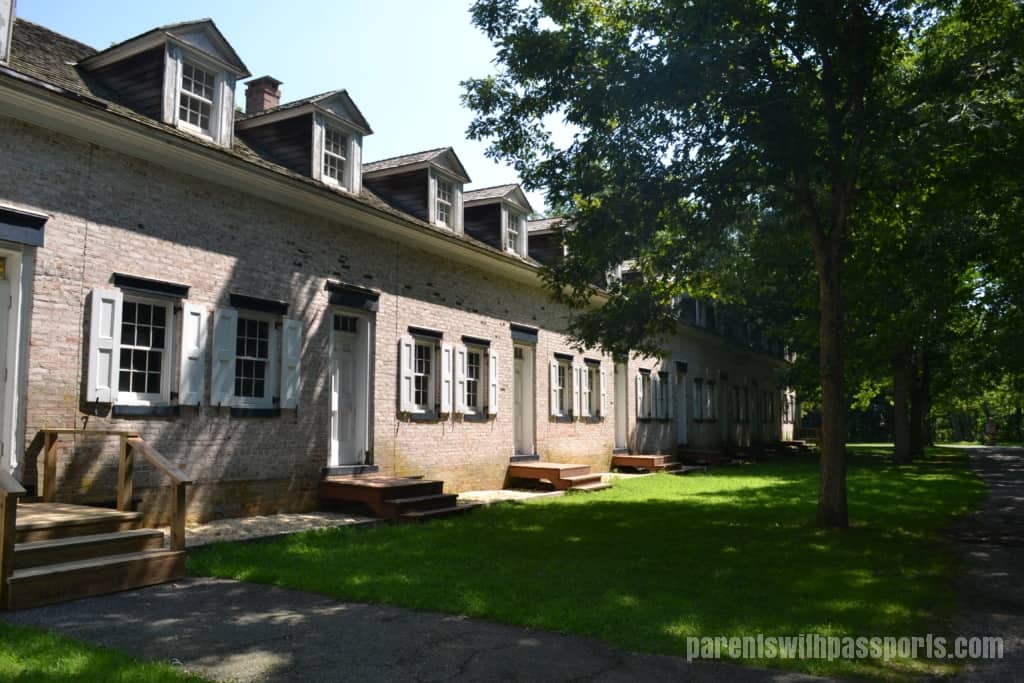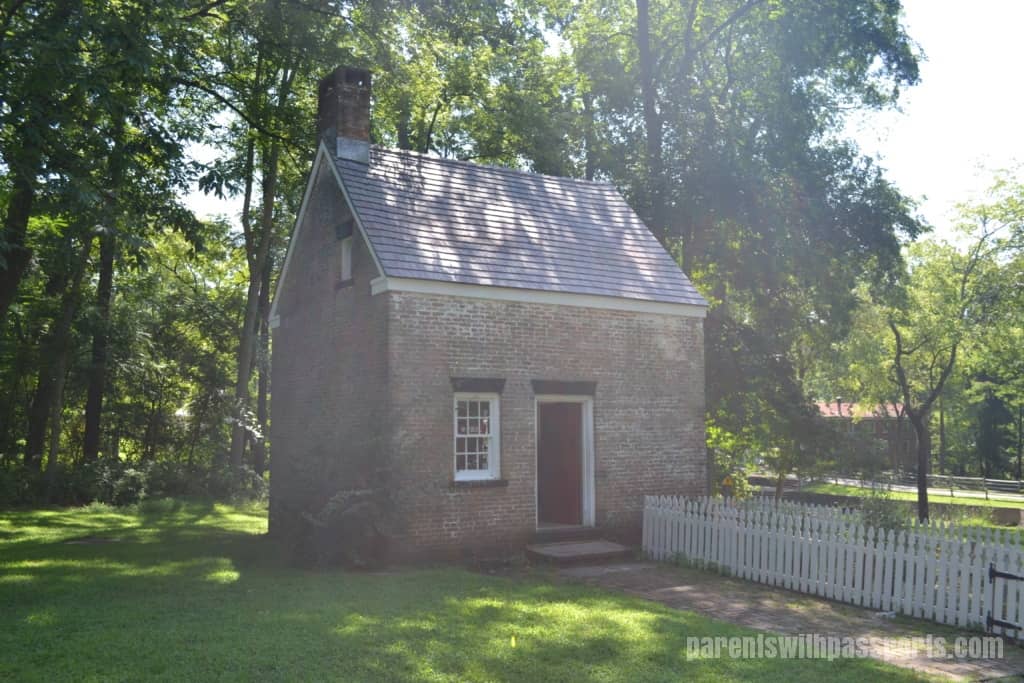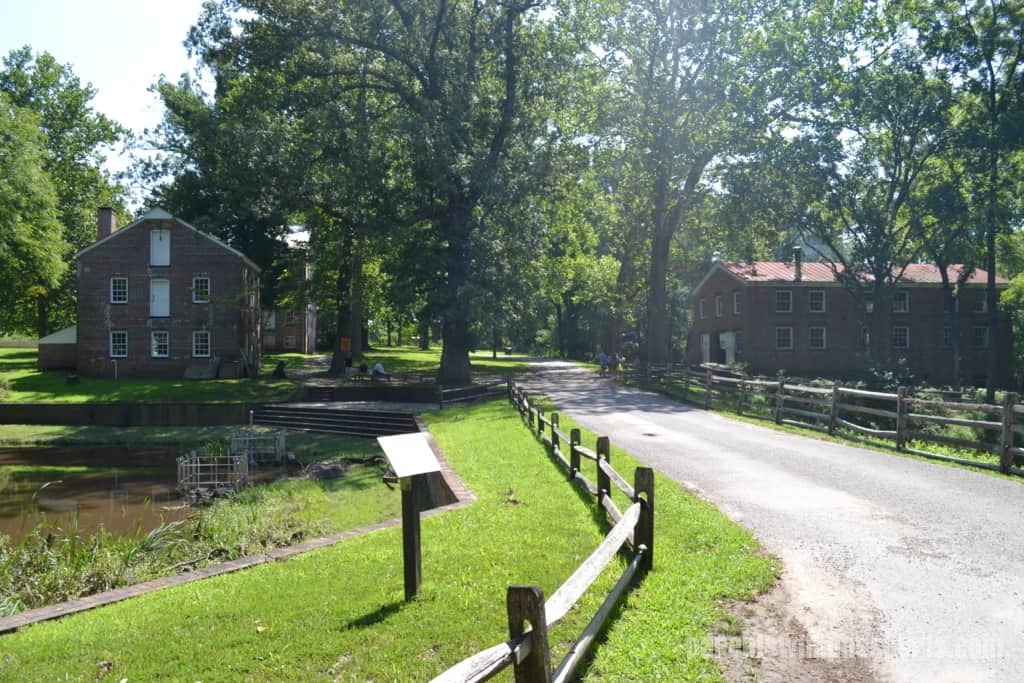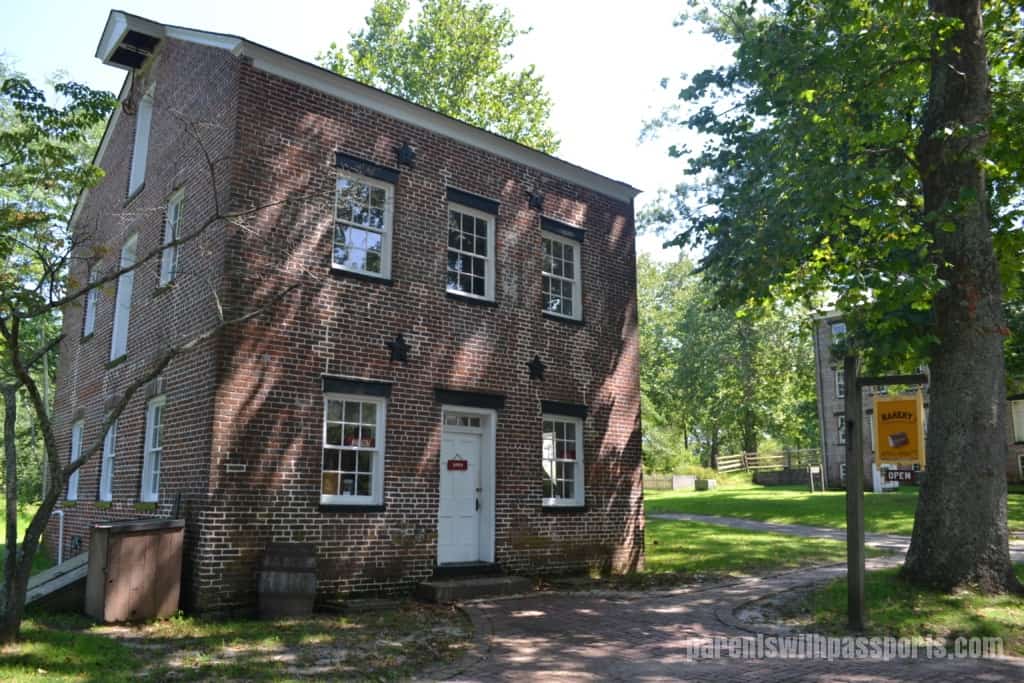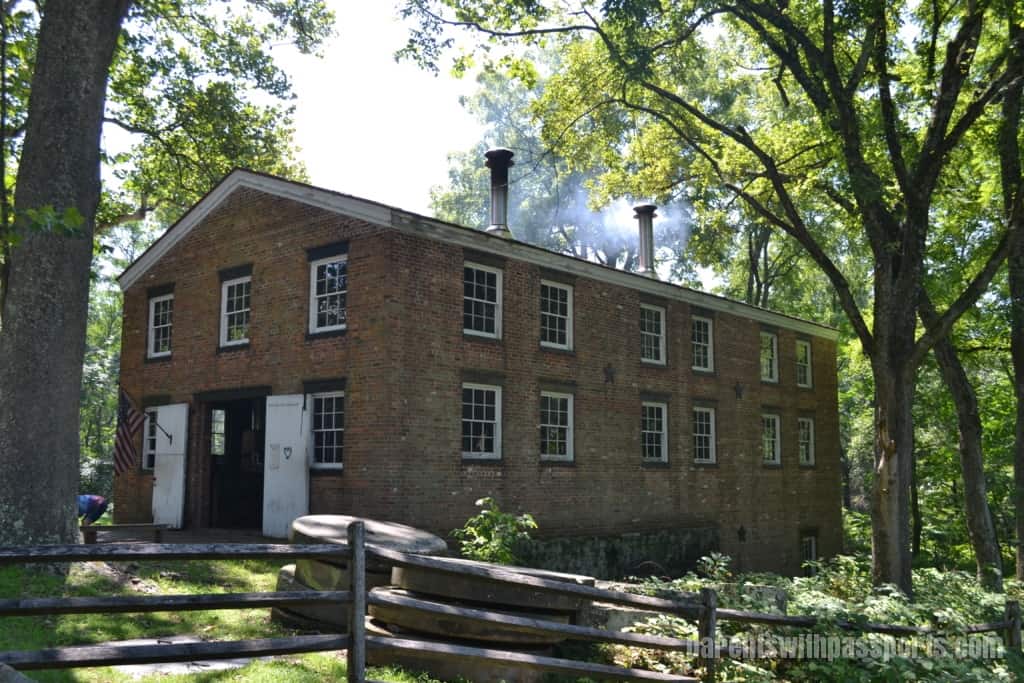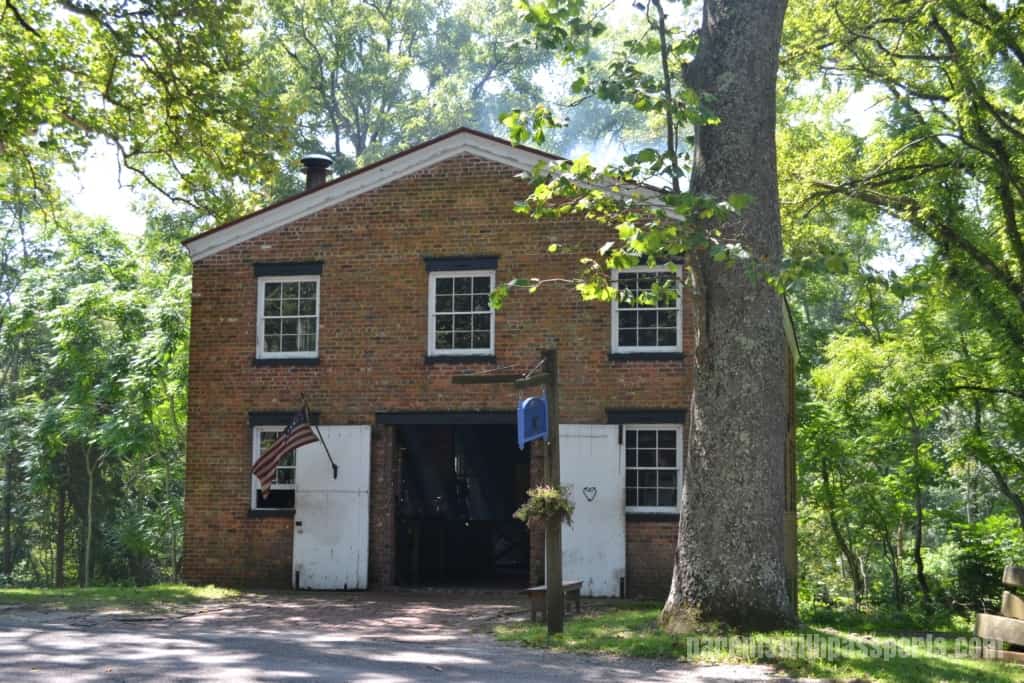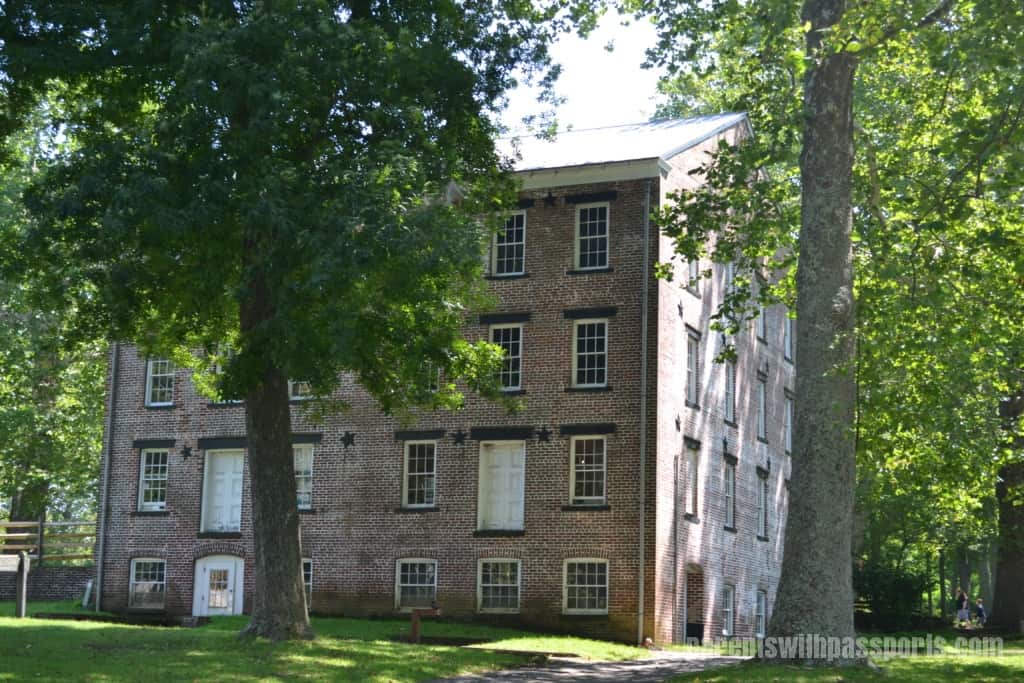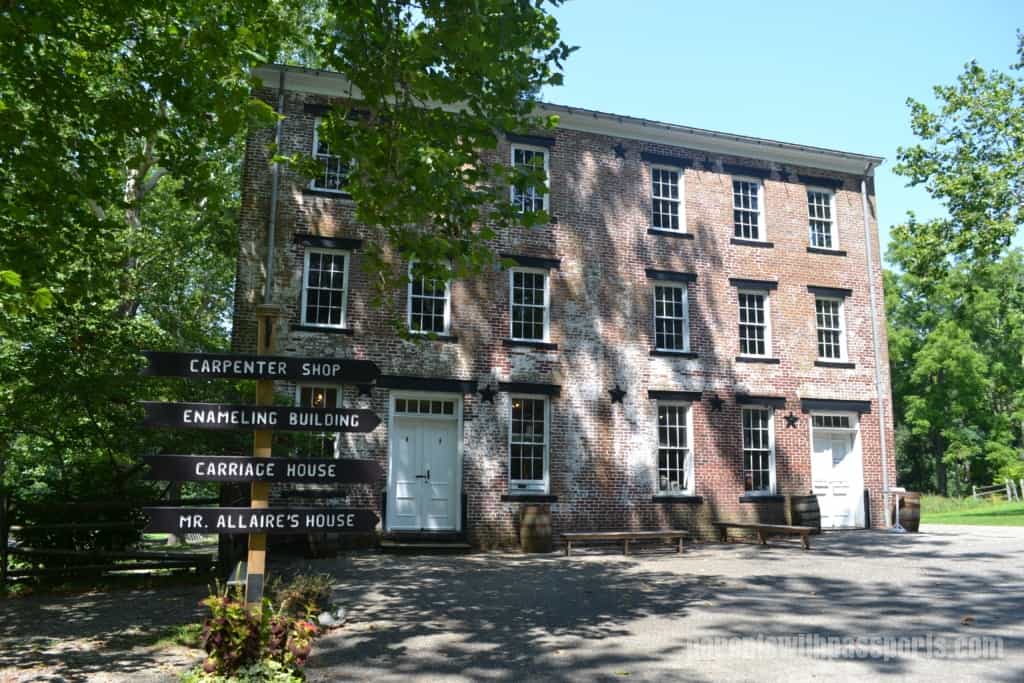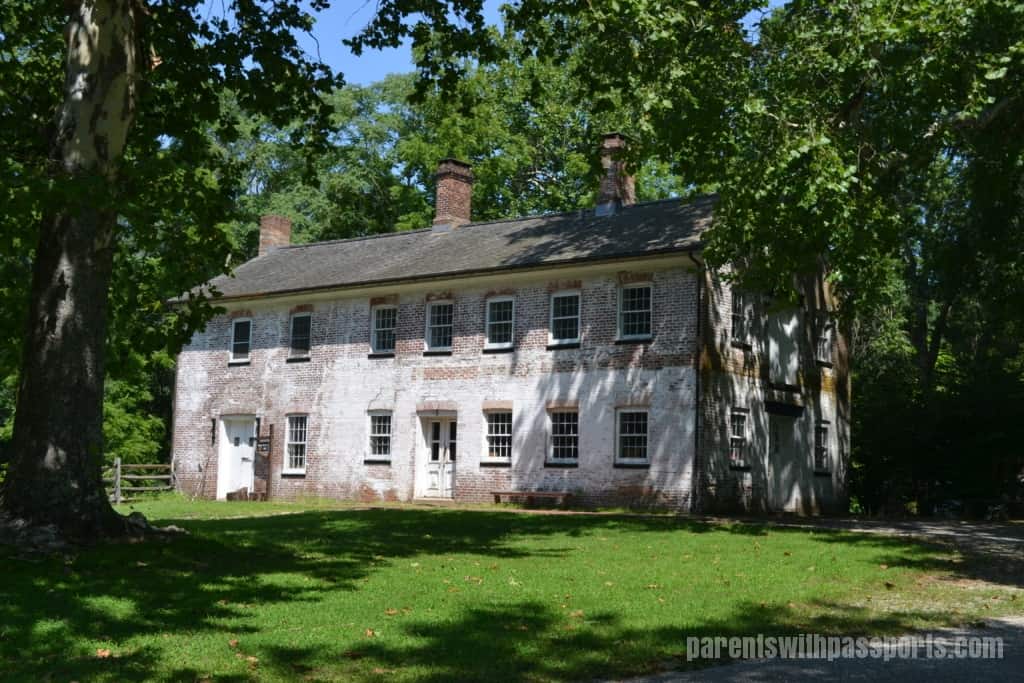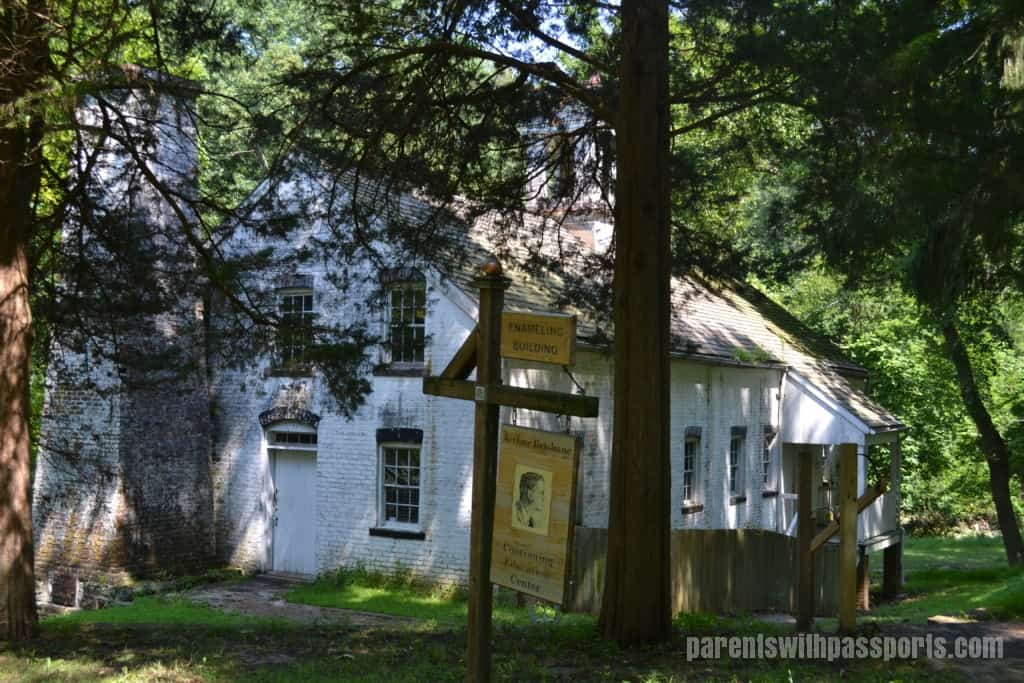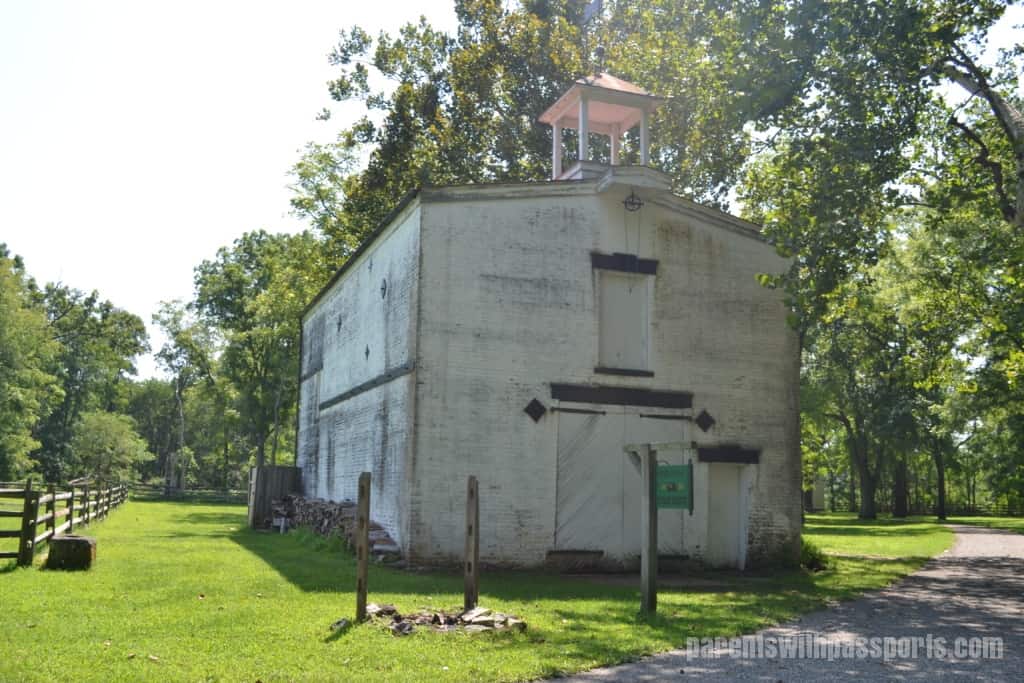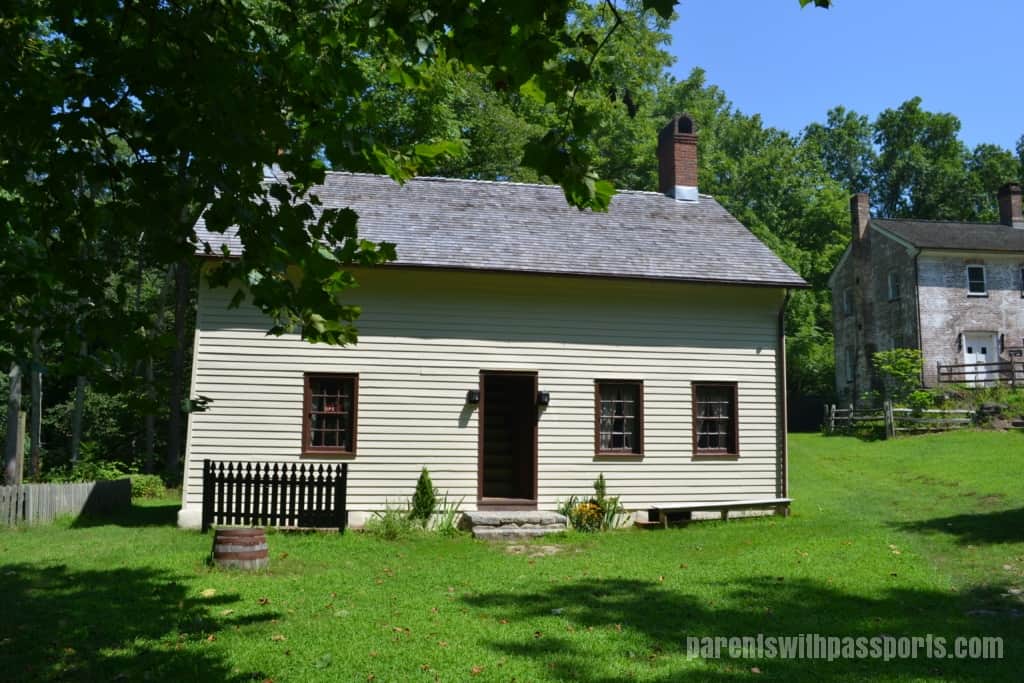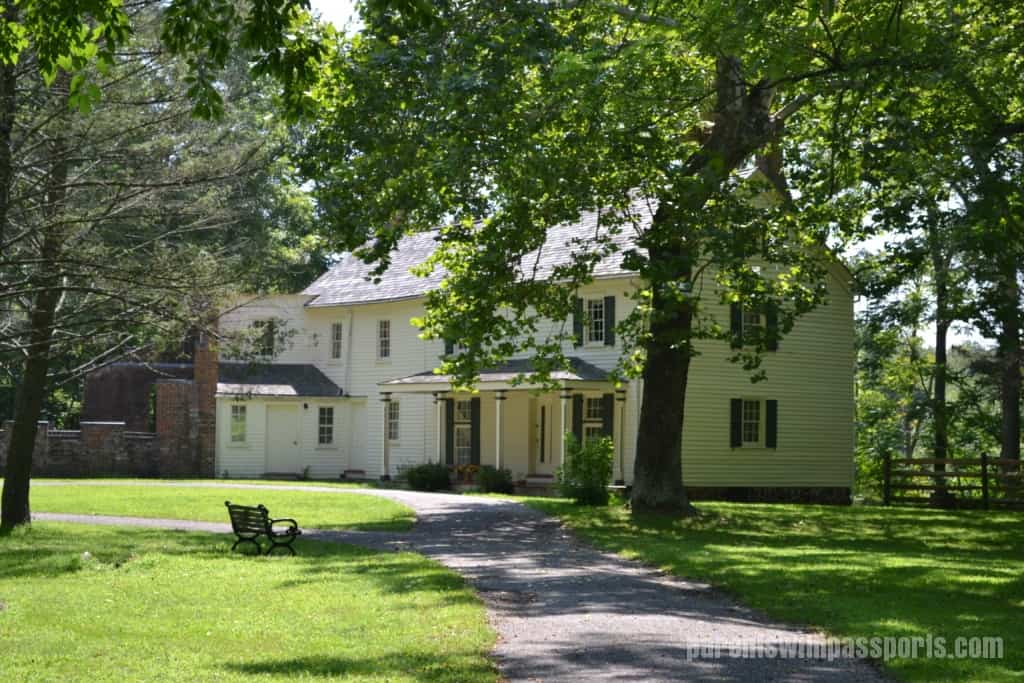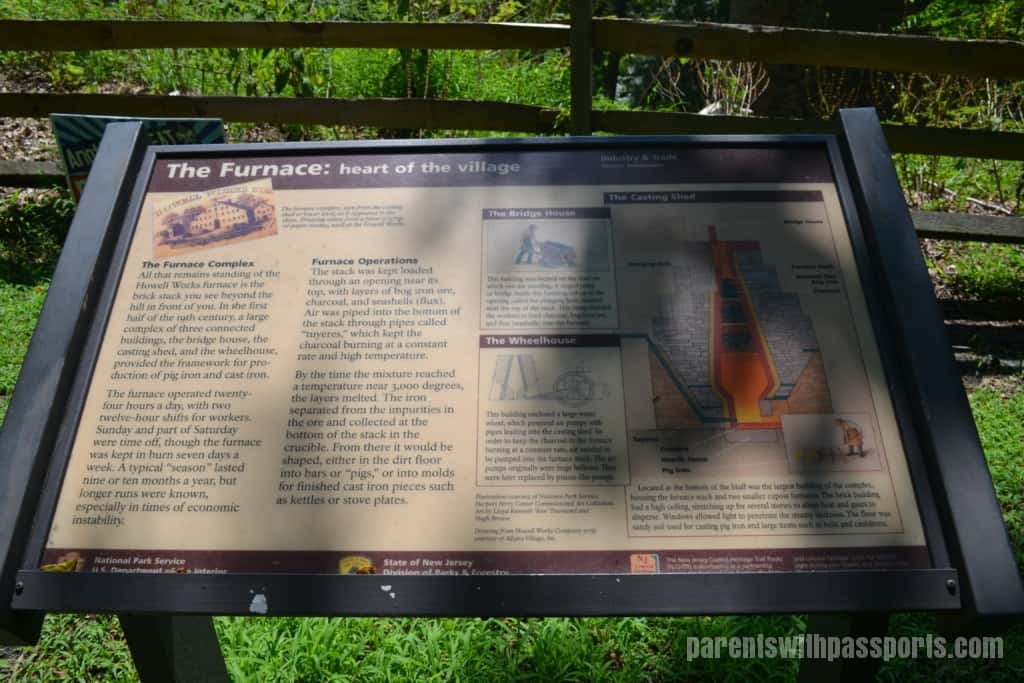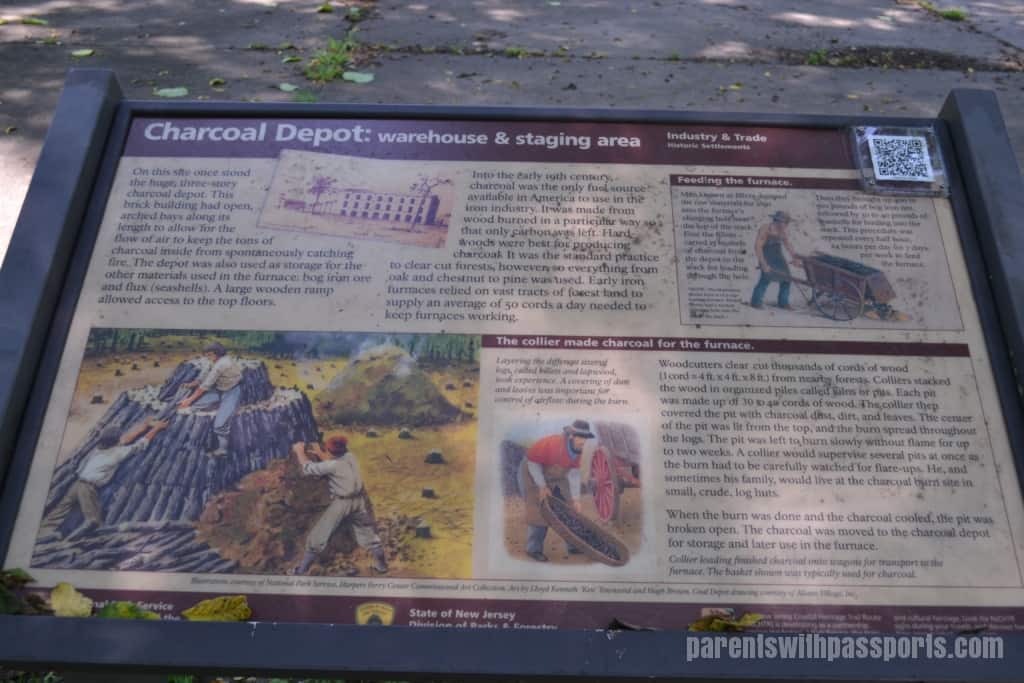Located in Farmingdale NJ, Allaire Village is a living history museum representing life in the early 19th century industrial community known as Howell Works. One of several businesses owned by James P. Allaire, Howell Works produced pig iron which was shipped to NY for use in the production of steamship engines and boilers. A self-sustaining village was built to support the business and its 400 workers and residents. Thirteen of the original buildings still stand today and are open to the public. Through education and reenactment, the Historic Village at Allaire portrays life in Industrial America.
The Visitor Center is found in the block of row houses and is a great starting point for information and directions. Inside is a volunteer who provides both background information on the village and maps. This block also holds the village’s museum, which gives an overview of the company, its owner, and the iron-making process. Also accessible inside the block is a fully restored row house, which would have been home to a skilled worker and his family. There were 8 row houses in this block, each of which could have housed 10 people or more.
The next building we came to was the Foreman’s Cottage. Built in 1827, it is the oldest building in the village and (shockingly) the third largest house on the property. Inside the tiny single room house, a teenage re-enactor dressed in early 19th century attire told us about the history and function of the home. The boys were fascinated by the little staircase hidden behind what appeared to be a tiny closet door and could not believe there was an upstairs in this small house. It was hard to imagine that an entire family lived in this house and that this was considered to be a middle-class home at the time.
From there we followed the road into the heart of the village. The bakery, blacksmith shop, and general store were across a little stream. It was a beautiful day and the old buildings surrounded by tall trees were quite picturesque.
The kids ran into the bakery first (obviously). The original beehive oven has been restored and is frequently used in bread making demonstrations. While not baked on site, there was a large variety of baked goods for sale here, as well as a few beverages.
Across the way was the blacksmith shop, which is what I remembered most from my visit as a kid and what I was most excited for my own kids to experience. The blacksmith’s four forges are still active and two men were hard at work inside. Unfortunately, one of them had just used the bellows and it was ridiculously smoky in there. We literally couldn’t stay in there for more than a minute because the smoke was hurting our eyes and lungs. I was disappointed – and a little worried – that the prime attraction for the kids was smoked out. I had envisioned spending a good bit of time here watching them work but we were in and out very quickly. (Note: no photos are allowed inside any of the buildings.)
Built in 1835, the general store is 4 stories tall and was one of the largest general stores in NJ during its prime. Both the bakery and the general store had what appeared to be doors to nowhere on the second and third floors. The boys were fascinated because the doors literally opened to nothing but a two or three story drop. But these doors actually served a purpose. They were used in conjunction with a pulley system to get supplies up to the higher floors.
The general store was the key to Mr. Allaire’s vision for a self-sustaining village and he invested heavily in it. The store was a post office, apothecary, butcher shop, grocery shop, and department store all rolled into one. It literally sold everything his workers could ever need, from flour to fabric to furniture.
The general store has been continually operating since it opened in 1835. Interestingly, during a period of economic hardship in the late 1830s, Mr. Allaire issued his own currency and used it to pay his employees, who could only use it at the general store. Today, the general store sells gifts and items handmade on site… and accepts US dollars.
Those three building were really the highlight of the village, and the ones that are open the most frequently. All other buildings are open only when manned by volunteers. (The Visitor’s Center does post which buildings are open each day.) The Manager’s House was also open but the rest of the buildings (including Mr. Allaire’s house) were closed so we could only see the outside and peer through the windows.
We rounded out the tour of the village by checking out the Furnace, or rather the brick stack that remains from what was once the furnace complex. In addition, a few brick walls were all that was left of the once-3 story Charcoal Depot. While the buildings themselves no longer stood, there were interesting displays showing how the buildings once looked and explaining how they functioned.
All in all, our visit to Allaire Village was an enjoyable but not very exciting hour. It was a nice day and the boys liked exploring the village and learning a little about its history and how iron was made. I have fond memories of a class trip here as a child and had higher hopes for our visit though. We went on a Wednesday during the summer and it was admittedly not the best time. A few building were open and a few historical interpreters were onsite, but overall it felt mostly like wandering through a deserted old town.
So while I would not recommend going on a random Wednesday during the summer, I would still overall recommend a visit. There are so many cool events that are held here – from contemporary events like flea markets and haunted hayrides to historical reenactments like holding an 1830s election day event in November. Or you can simply wait for a day when the site is fully staffed with interpreters and all the buildings are open. I feel like there is a lot offered here; we just didn’t choose the right time to take advantage of it. (I will also note that we had a very difficult time discerning what was open from the website and FaceBook page (which seemed to contradict each other) and sort of took a leap of faith by driving out there since we weren’t even 100% sure it would be open at all.)
In addition, Allaire Village is just one part of the larger Allaire State Park, which offers a variety of activities. There are many trails for hiking, biking, and horseback riding. The Manasquan River that runs through the park is great for canoeing, kayaking or fishing. There is a nature center, campgrounds, and a disc golf course. And they even offer rides on a steam train! The Pine Creek Railroad is the oldest continuously operating steam railroad in the country and is part of the New Jersey Transportation Museum housed in Allaire State Park. So my advice is to check the calendar for a cool event at Allaire Village and then go spend the entire day enjoying the many activities at Allaire State Park.
